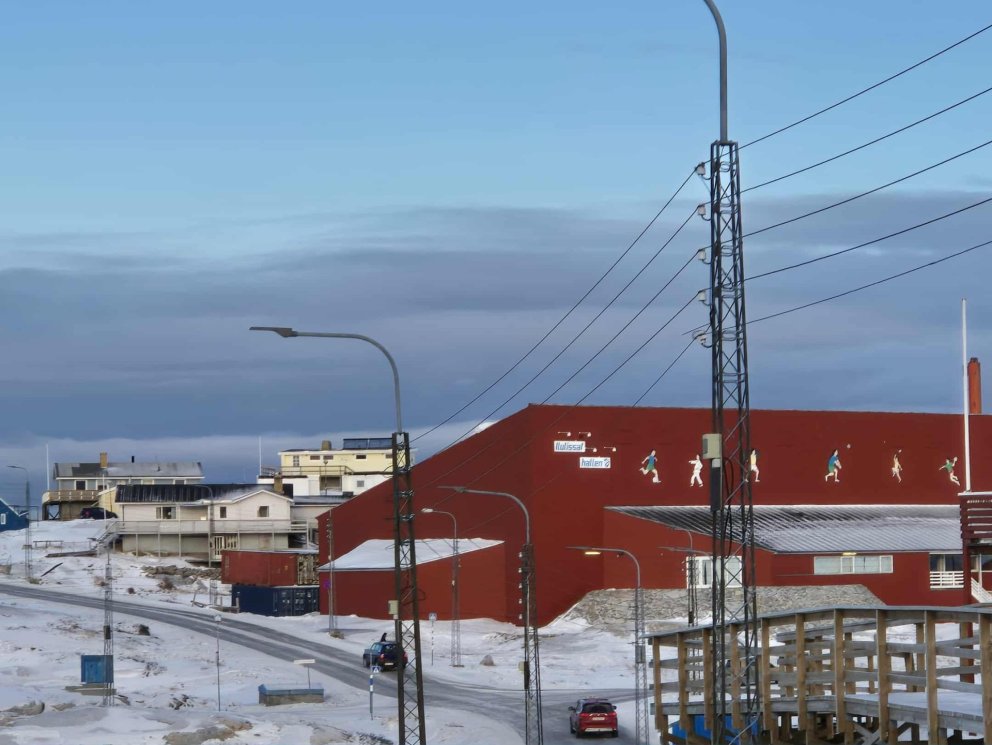Recent dissemination and fieldwork activities at SAI
This column provides an overview of recent dissemination and fieldwork activities at SAI.
October is typically a bustling month for those working on Arctic issues, and this year, the University of Akureyri hosted a thematic “Arctic October” to highlight Arctic issues and the range of Arctic research and activities conducted on the university campus.
To kick off Arctic October, the University of Akureyri and the Stefansson Arctic Institute hosted the inaugural Arctic Institutes Fair at the end of September. The fair was open to everyone, and during the event, representatives from the Arctic institutes on campus gathered to introduce their work through short presentations and discussions at booths at the university’s Ceremonial Hall. Participants included the Stefansson Arctic Institute; the Icelandic Arctic Cooperation Network (IACN); the International Arctic Science Committee (IASC); the Icelandic Tourism Research Centre; and the two working groups of the Arctic Council located on campus: CAFF (Conservation of Arctic Flora and Fauna) and PAME (Protection of the Arctic Marine Environment), along with the Polar Law Program and the Nansen Professorship in Arctic Studies.
To celebrate Arctic October, Jón Haukur Ingimundarson installed a small-scale version of the Stefansson Arctic Institute’s traveling exhibition, “The Friendly Arctic” in the halls of the university in collaboration with UNAK. The exhibition features a selection of Vilhjálmur Stefansson’s photographs, diary excerpts and a film that provides insights into his life and work, as well as his vision and legacy, which remain intimately connected to current issues of human-environmental relations, sustainable use of natural resources, and social and cultural viability in the Arctic region. The exhibition was first opened in Akureyri Art Museum in 2000 and has been displayed in various locations over the years, including Reykjavík, Norwich in Vermont, New York City, Copenhagen, Gimli, Winnipeg, Minneapolis, Iqaluit, Honningsvåg, Santiago de Compostela, Muros, Nuuk and Qaqortoq. It is currently on display in the Sólborg building.
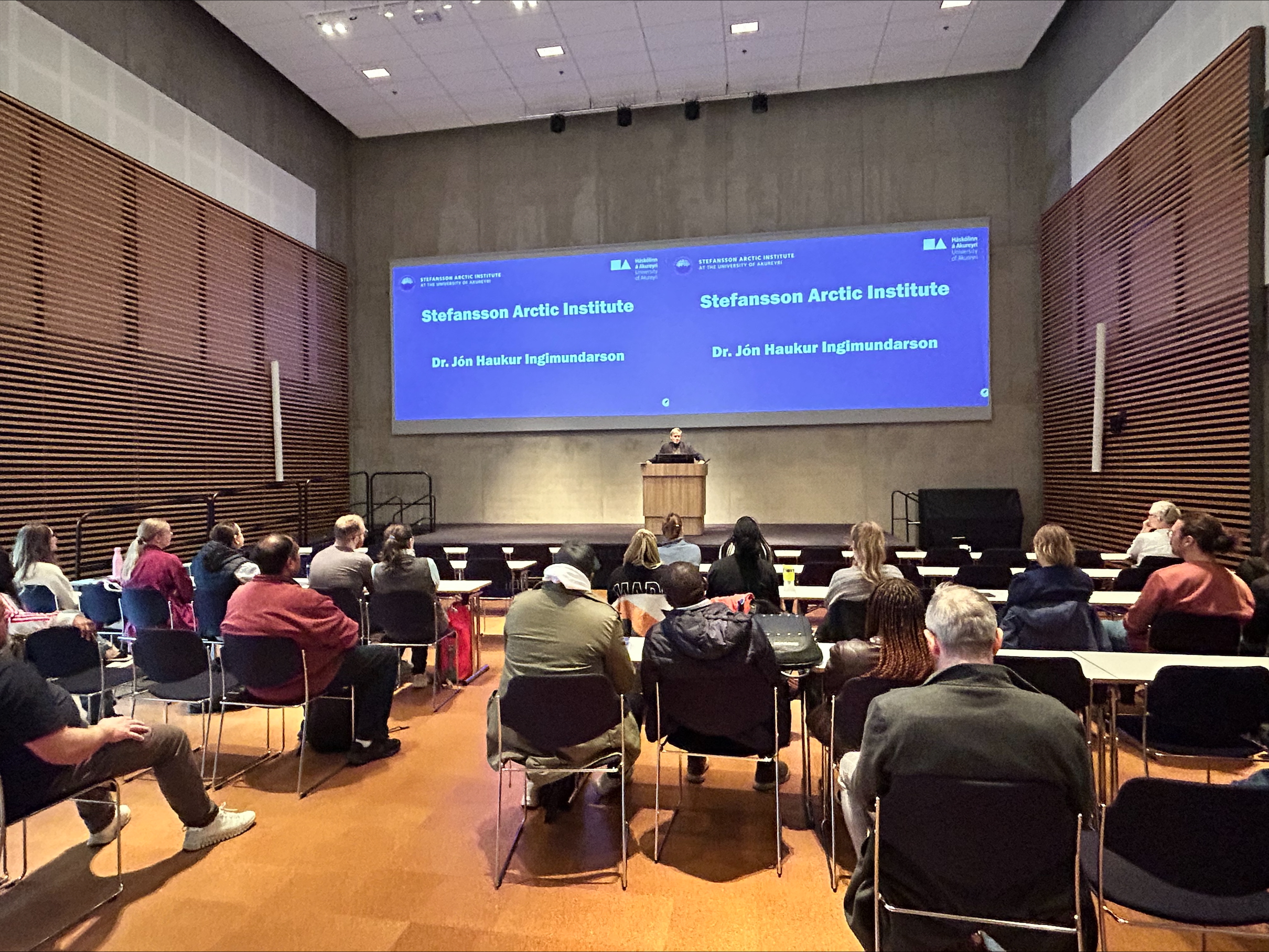
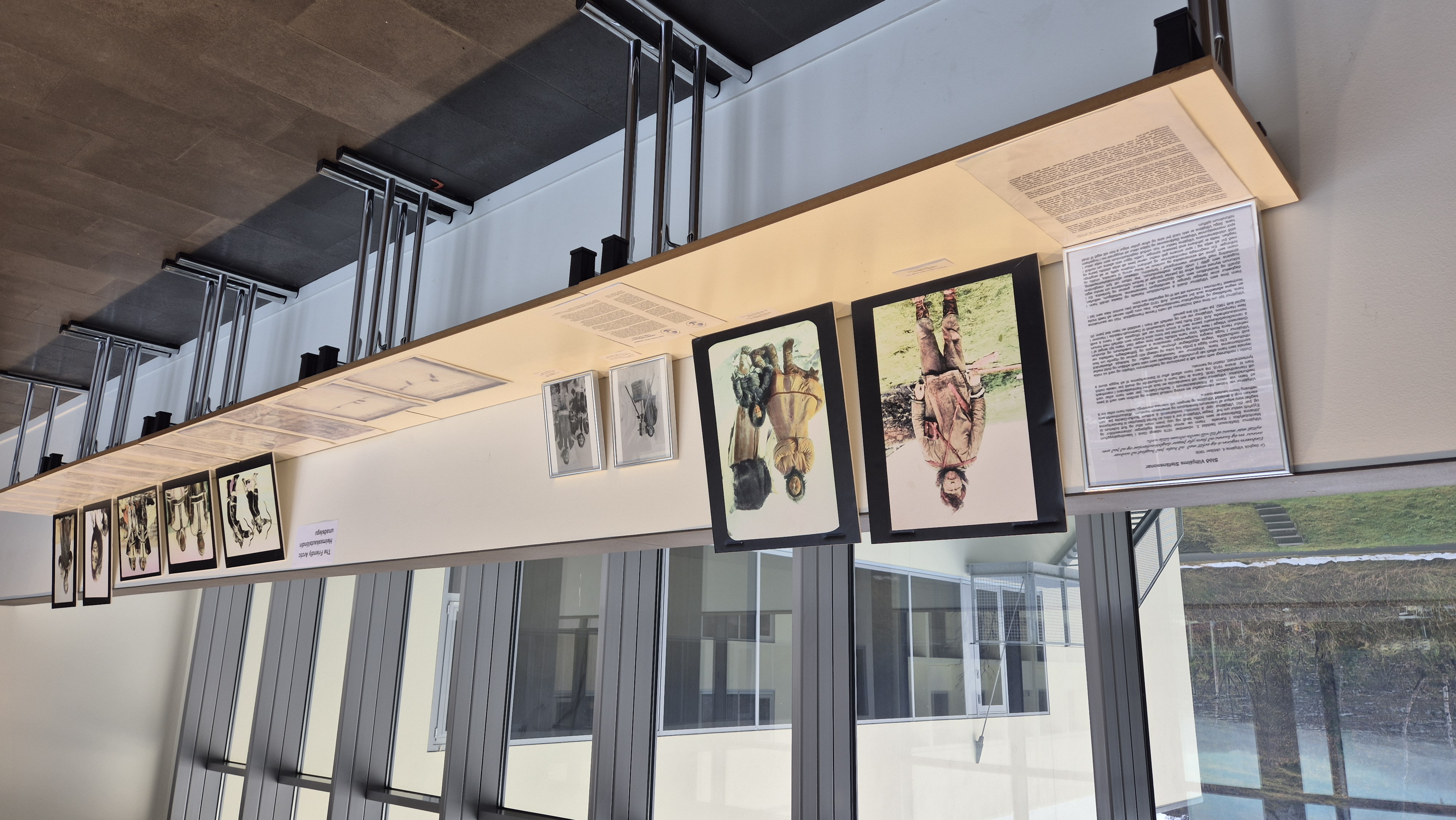
A number of workshops on Arctic matters were hosted at the university this fall, including two that are part of projects co-led by Tom Barry. The workshop Ocean Issues and International Collaboration was hosted at the Ceremonial Hall in late September in collaboration with the University of Iceland, the IACN, Rannís and the Icelandic Climate Council. Along with Tom, Catherine Chambers and Helga Númadóttir participated in the workshop which marked the second workshop out of four organized as part of the Stronger Arctic Research in Iceland project. In the following week The Community Resilience Forum, organized by the NACEMAP project, took place. The forum was held concurrently in Iceland, Finland and Ireland on the 8th of October. Additionally, Jón Haukur Ingimundarson and Tom Barry presented UNAK’s Arctic research profile at a UArctic Thematic network meeting and open seminar held on campus 14.-15. October.
In early October, Joan Nymand Larsen traveled to Ilulissat in Disko Bay, West Greenland where she joined fellow researchers for fieldwork on the impacts of permafrost thaw on cultural ecosystem services as part of the ILLUQ project. ILLUQ is an EU-funded interdisciplinary permafrost research project led by the Alfred Wegener Institute. Upon returning to Iceland, Joan participated in the SustainME kick-off meeting on October 15th at the Nordic House in Reykjavík. The meeting, which was organized by NordForsk, launched this newly funded research project, Sustainable Use of the Arctic Marine Environment (SustainME), in which SAI is a partner, with Joan leading the SAI research.
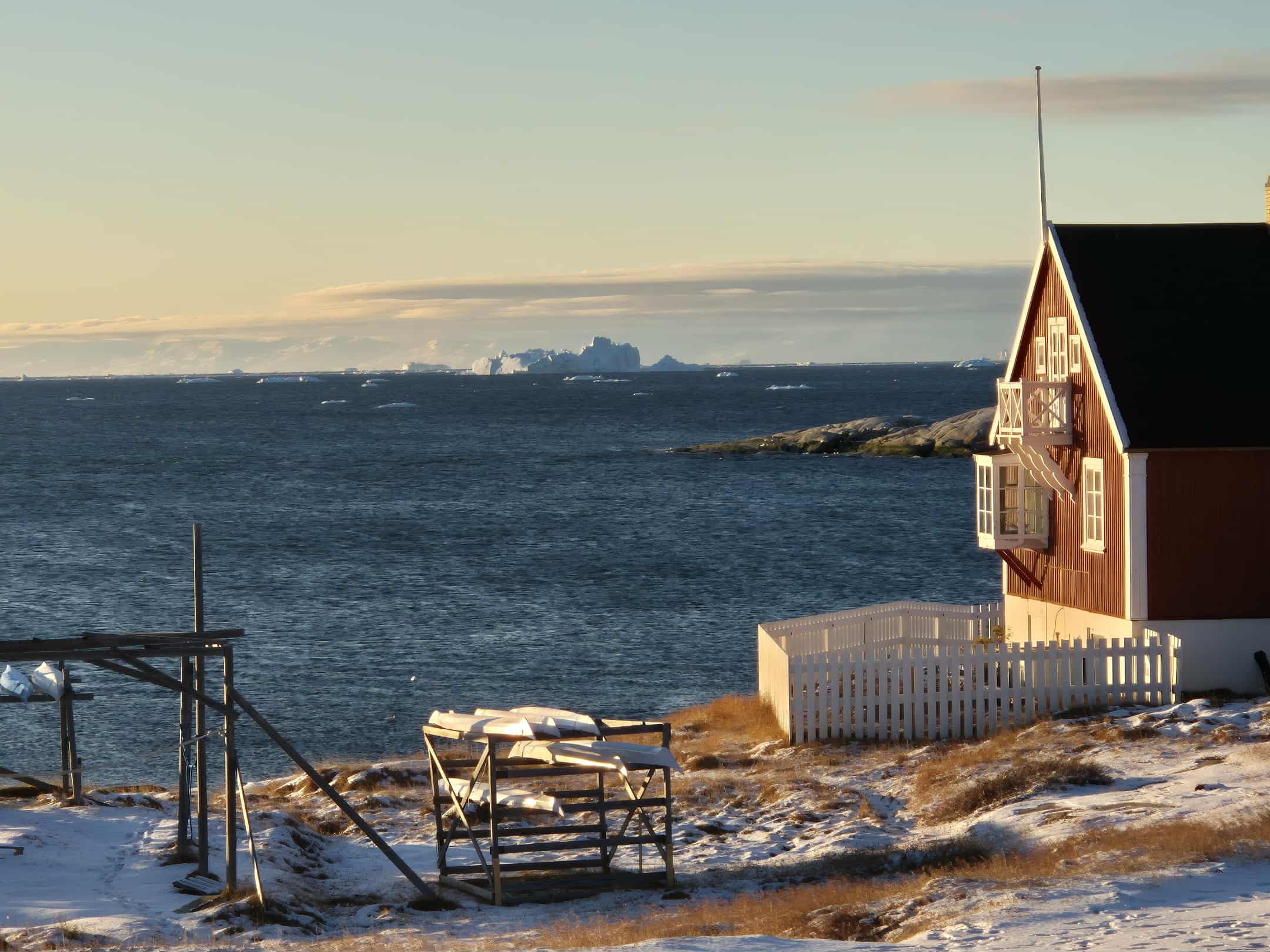
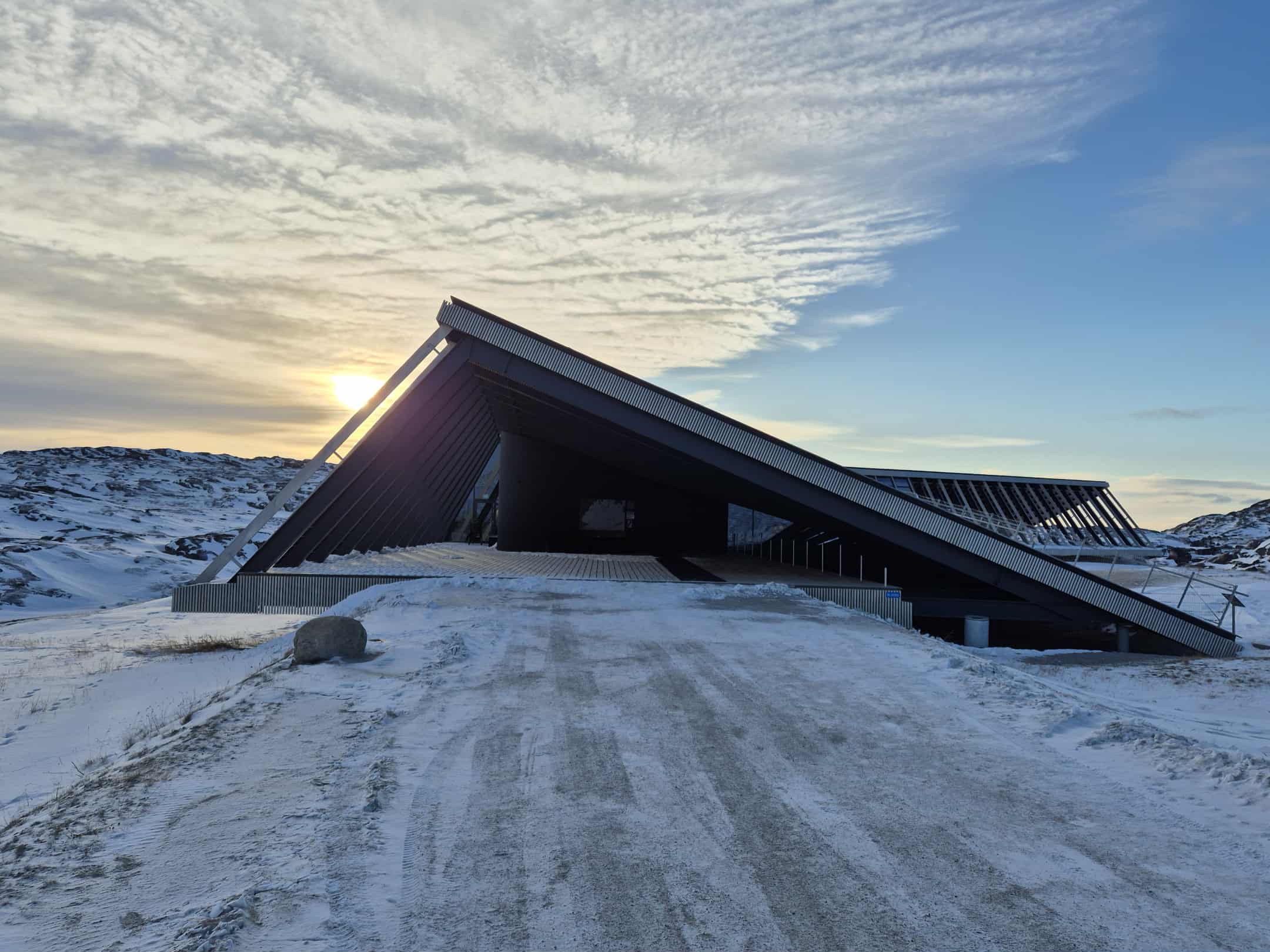
In Reykjavík that same afternoon, Tom Barry participated in a panel discussion at an open symposium on Arctic challenges in the University of Iceland’s Ceremonial Hall. The seminar, organized by UArctic and the University of Iceland, is a pre-event leading up to the annual Arctic Circle Assembly, which began the following day in Harpa and lasted from 16th to 18th of October.
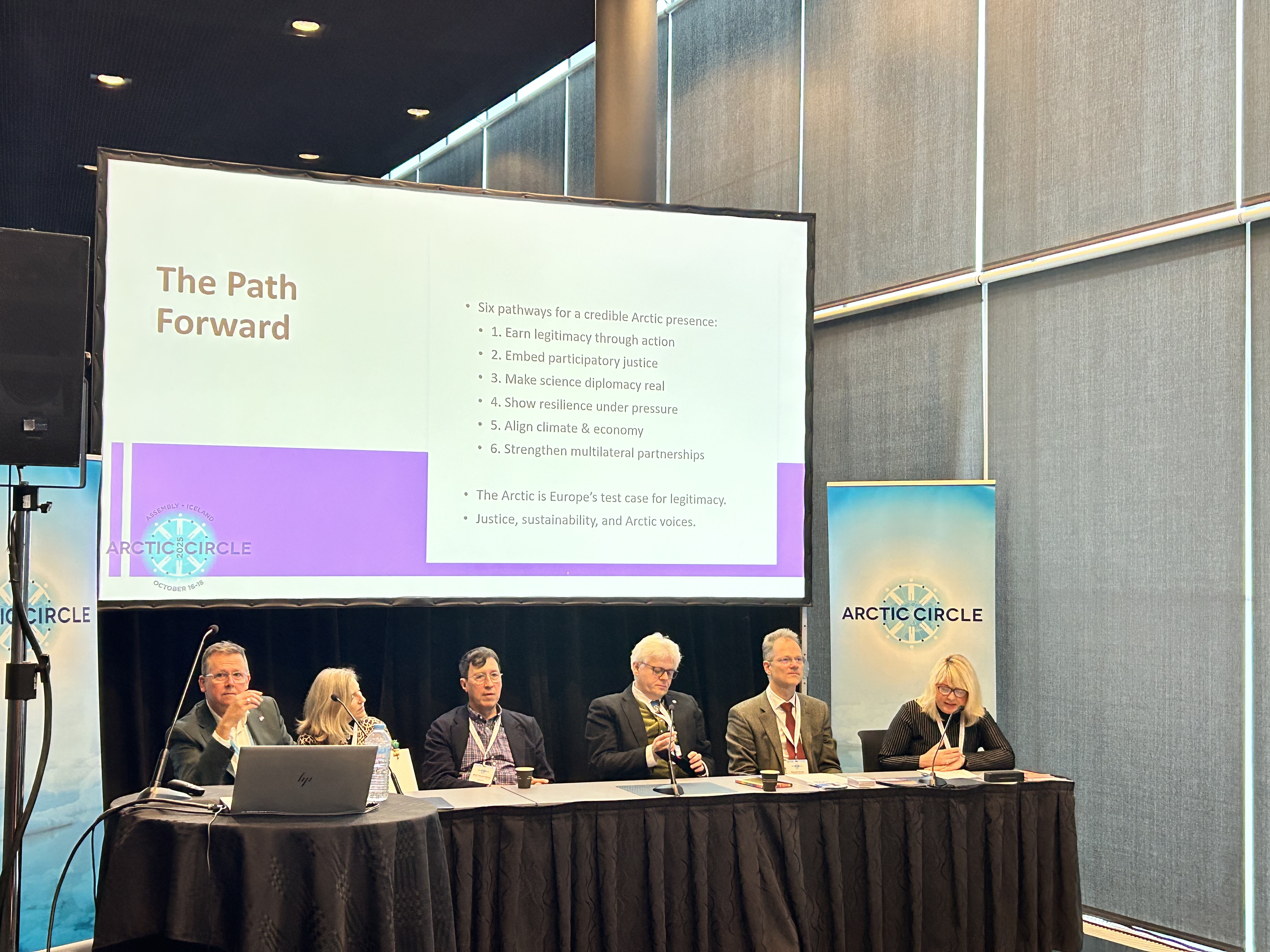

A large delegation from UNAK and various Arctic institutes on campus attended the Arctic Circle Assembly, actively participating in numerous panels. Joan Nymand Larsen presented in the session "Legitimacy and Reputation: The EU as a Reliable Arctic Actor," Catherine Chambers delivered a talk in the session titled "Can We Do Better? Skills for the Next Generation of Arctic Governance Experts" while Tom Barry contributed to discussions in the sessions "Balancing Act: Navigating Sustainable Development, Conservation, and Governance," "Ireland and the Arctic," and "Iceland’s Arctic Centre: Implementing Iceland's Arctic Policy."
Following the Arctic Circle Assembly, Helga Númadóttir traveled to Greenland to participate in the 18th Polar Law Symposium in Nuuk which took place 22nd to 24th of October, where she delivered a presentation titled “Mining Encounters in South Greenland: Local Perceptions and Socioeconomic Dynamics of the Nalunaq Goldmine," as part of the WAGE - Arctic Economy and Social Transitions project.

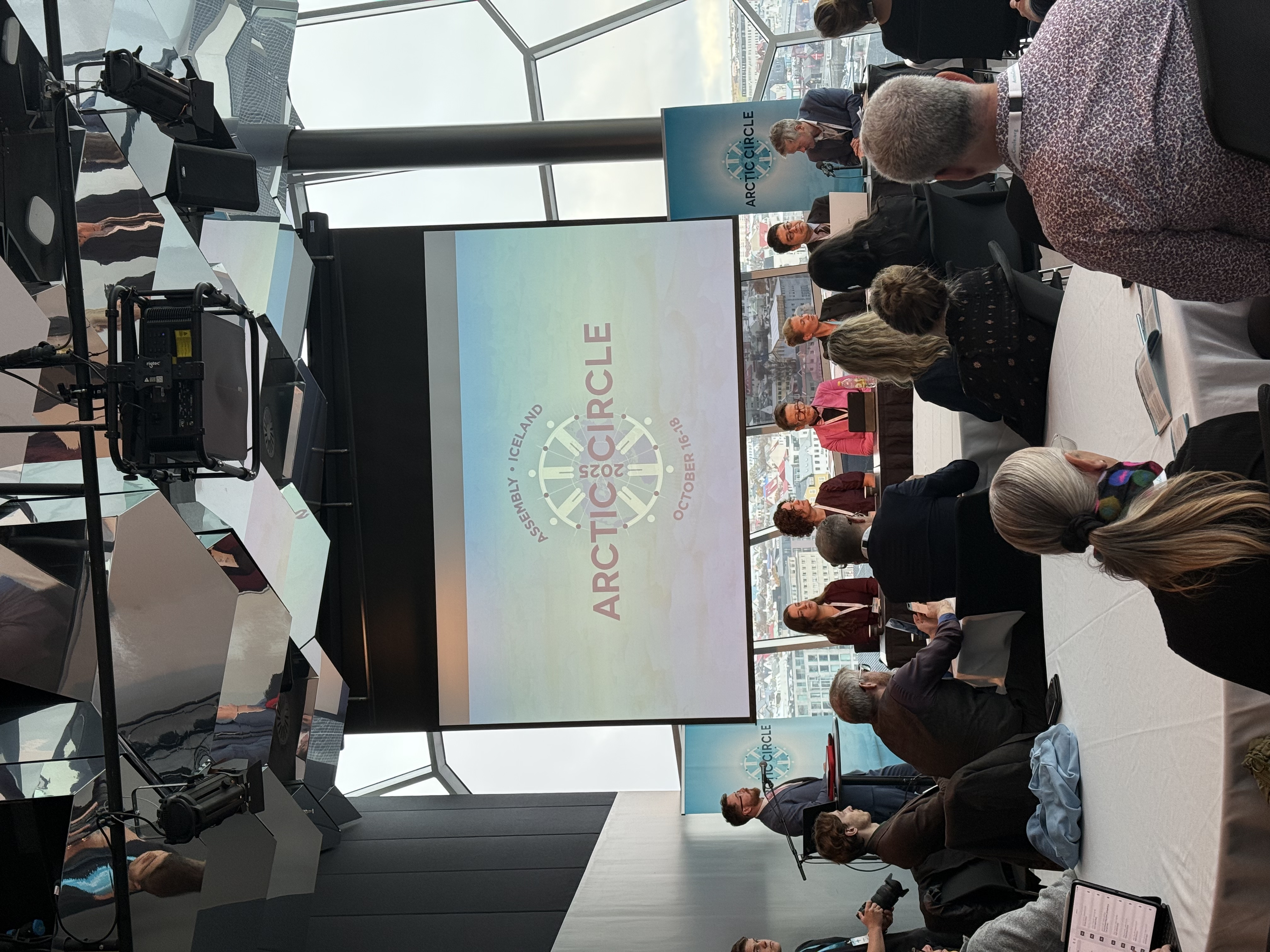
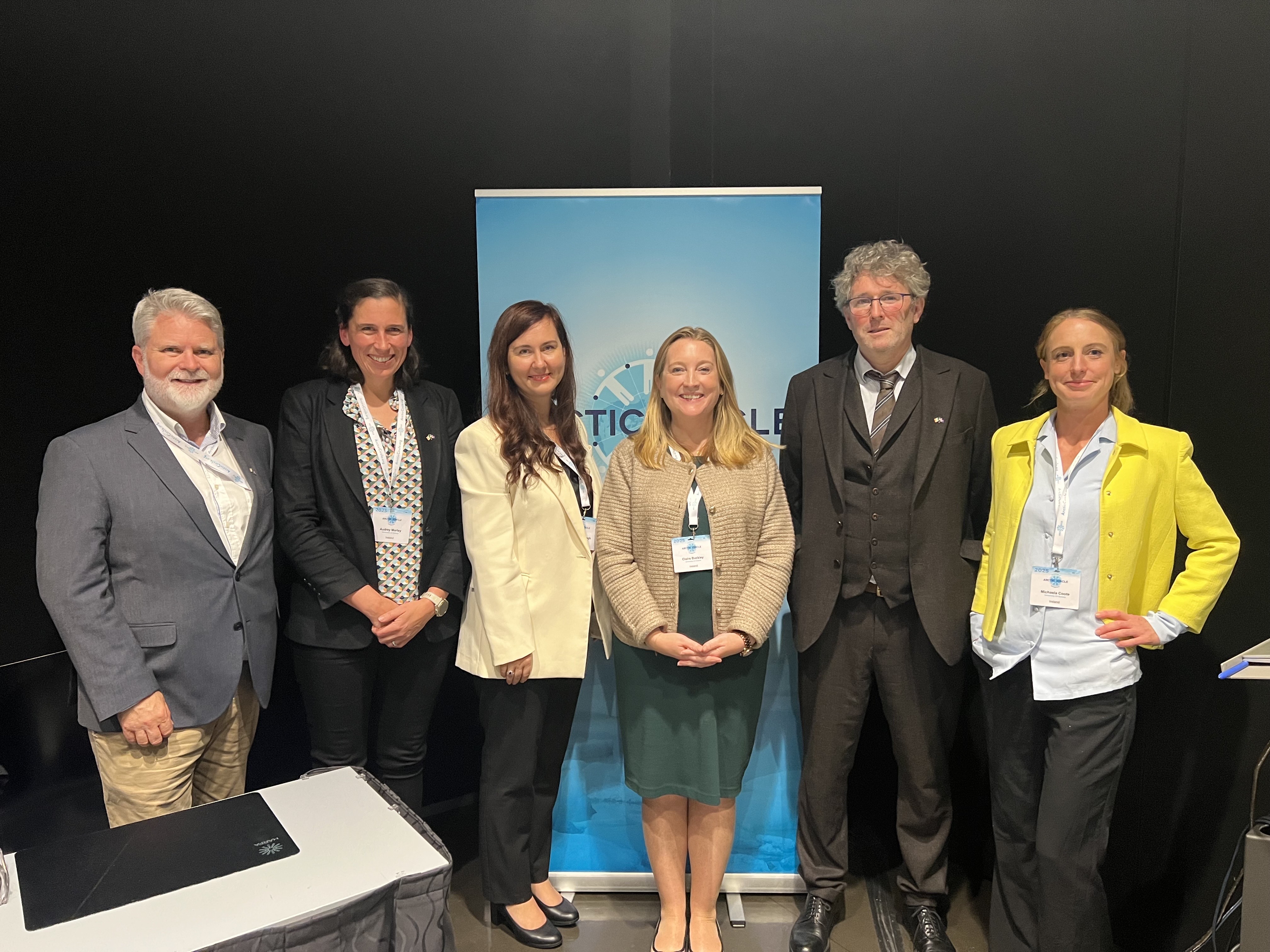

In October, Joan Nymand Larsen was also named Scientist of the Month at the University of Akureyri. This monthly feature highlights researchers at the university through introductory articles. The article about Joan is available [here]
